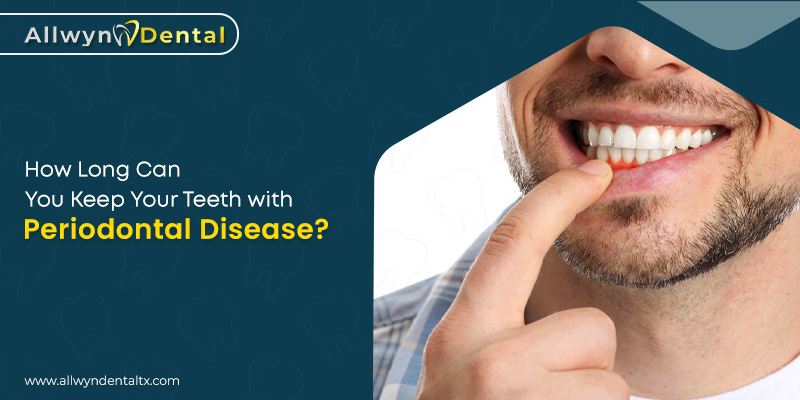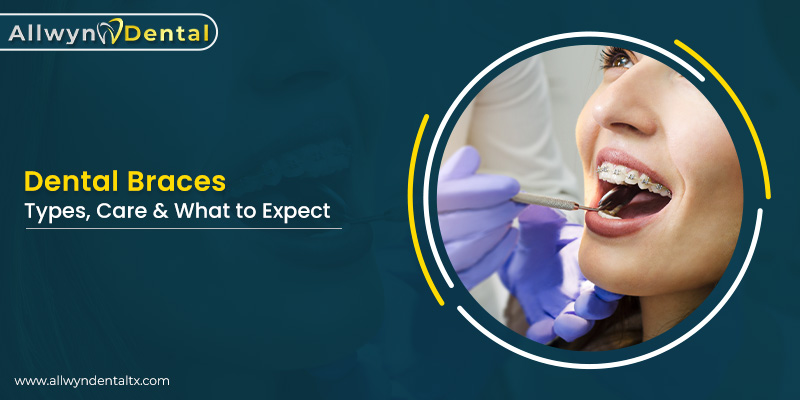How many of you can honestly say no to having experienced any kind of oral health problems? Probably no one. Almost every person suffers from gum problems or tooth decay at least once in their lifetime. It may be as simple as swollen or bleeding gums, toothache, and sore gums to something as severe as loose teeth, damaged tissues, or damaged bone.
All these problems can be combined under the common banner of gum or periodontal diseases. Fortunately, in most cases, these diseases can be avoided or cured by maintaining good oral hygiene and keeping up with your dental visits.
But, if, in some cases, the symptoms tend to speed up, it is advisable to seek medical help. If left untreated, gum diseases may lead to tooth loss and other medical conditions like diabetes and heart stroke.
Symptoms of Periodontal Disease
Healthy gums may vary in colors ranging from pink to brown, but the one thing that remains constant is the firmness and the way they fit around the teeth. But that is not the case with gums surrounding the teeth with periodontal disease. Gingivitis – considered the mildest form of periodontal disease – is the earliest phase and is reversible. But if it remains untreated, it can take a turn for the worse. Some of the common symptoms that suggest gum disease include:
- Swollen, Sore, or Red Gums
- A Persistent Foul Breath
- Pain while Chewing
- Receding Gums
- Severe Sensitivity in Teeth
- Bleeding or Tender Gums
- Existence of Pus Between the Gums and Teeth
- Emerging Spaces Between Teet
- Loose Teeth
- Change in Bite
The risk of periodontal disease increases with unhygienic oral habits. The bacteria buildup around the teeth leads to plaque formation, infecting the gums. If any sign of the aforementioned symptoms appears, do not delay in contacting your dentist. The quicker you receive treatment, the greater your chances of undoing the harm.
What Are the Risk Factors For Developing Periodontal Disease?
Neglecting basic oral hygiene practices like brushing and flossing can ignite a chain reaction leading to dental problems. Yet, many other factors can compound the risk of periodontal disease. Some of the factors that can enhance your periodontitis risk:
Poor Dental Hygiene

Poor oral hygiene is the reason why you end up with gingivitis. Continuing with the same habits will no doubt increase the risk of periodontitis. Regular brushing and flossing twice daily can help you maintain a good oral health.
Stress

Periodontal disease, along with stress and anxiety, is a ticking time bomb. Stress lowers your immunity and weakens your natural defense system making you more susceptible to developing health conditions with severe consequences.
Smoking or Chewing Tobacco
Smoking is regarded as one of the leading causes of gingivitis and poor oral hygiene. And on top of that, smoking or chewing tobacco while suffering from periodontal disease is a recipe for disaster. It weakens your blood flow to gums, affects the immune system, and diminishes the effectiveness of periodontal treatments, leaving you vulnerable to infections and tooth decay.
Cancer Therapy
Cancer in itself is a disease that attacks the immunity of your body. Cancer therapy like radiation or chemotherapy can further deteriorate your immunity, making you vulnerable to gum diseases or worsening an existing condition. Cases like these need particular oral care during the treatment
Obesity
Excess body fat worsens the severity and progression of periodontal disease. It causes chronic inflammation, insulin resistance, and impaired immune function lowering your immunity.
Systematic Disease
Systematic diseases like diabetes, heart disease, or hypertension can impact dental health. An interplay between these conditions compromises the immune system. This makes you more vulnerable to gum infections.
How Fast Does Periodontal Disease Progress?

Having seen the various symptoms and risks of gum diseases, it’s time to tackle the next question plaguing your mind,“ how long does periodontitis last?”. Periodontitis is a chronic stage of gum disease. But, the progress rate for it varies with every individual. But, the disease progresses over an extended period of time rather than a small timeframe.
The progress rate of periodontal disease depends on various factors. These include the person’s oral hygiene practices, genetic tendencies, and health conditions. Ignoring basic dental routines of flossing and brushing speeds up the progress of gum diseases.
Detecting periodontitis in its early stages can be challenging since symptoms are minimal. But, as the disease advances, signs like gum bleeding, gum recession, and even tooth mobility become more evident. Periodontitis results in problems like tooth loss and severe structural damage without treatment.
Periodontitis patients often need continuous dental care to control their illness. The treatment may need in-depth cleaning methods like scale and root planing clean the formation of plaque and tartar below the gum line. Antibiotic medication or gum surgery can also be necessary in rare circumstances.
In any case, good dental hygiene and regular dental checkup can help you detect the early signs of the disease. Resolution is possible in the early stages of the disease.
How Long Can You Keep Your Teeth with Periodontal Disease?
The root of all dental problems lies in oral hygiene. The situation might not seem severe initially, but it accelerates into the boundaries of chronic.
Practicing proper oral hygiene is one primary precaution against gum diseases. However, even with all the precautions, plaque and tartar build-up may lead to gingivitis. At this stage, consulting your dentist can prevent further damage.
Visible symptoms like tooth widening, bleeding, bad taste, and bad breath show the urgency of professional help. At this stage, prolonging the dental appointment can result in tooth loss. If you still don’t wake up to the indications of your body, then you have probably lost your tooth for good.
But losing a tooth is just the starting; the bacteria can penetrate your bloodstream and cause various chronic health issues.
Is Periodontal Disease Curable?
Maintaining good oral hygiene can prevent you from having gum diseases. And keeping up with regular dental checkups will help detect the infection in the early stages when it is still reversible. But, once the condition escalates into periodontitis, there is no cure. However, the expert periodontists at Allwyn Dental can help you manage the illness and prevent further progression.
Will I Lose My Teeth If I Have Periodontal Disease?
The early stages of periodontal diseases do not carry the risk of losing teeth. If left untreated or long, the infection may escalate and reach the bone structure of your jaws resulting in loose teeth and sometimes leading to tooth loss.
Can Periodontal Disease Make You Sick?
Periodontal diseases are generally caused by bacteria and can result in the person displaying the symptoms of bacterial infection. Fever, chills, flu-like symptoms, bite problems, and bleeding gums are some of the issues that may indicate gum disease.
Can You Die from Gum Disease?
Gum diseases, in general, are not deadly, and in most cases, early detection may even reverse the damage. But if left untreated for long, the infection may travel from gums to your blood and other organs leading to other chronic diseases which may result in death.




